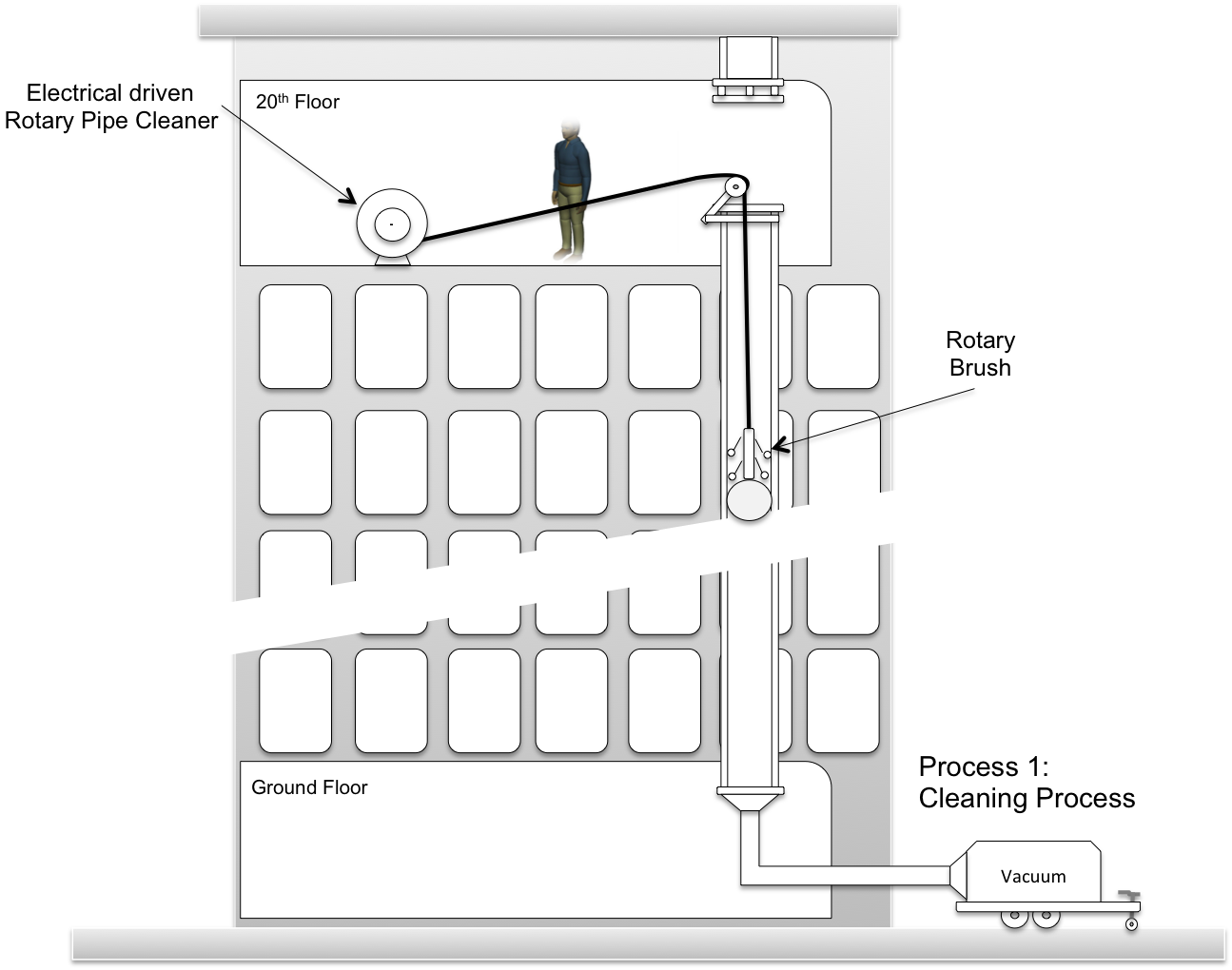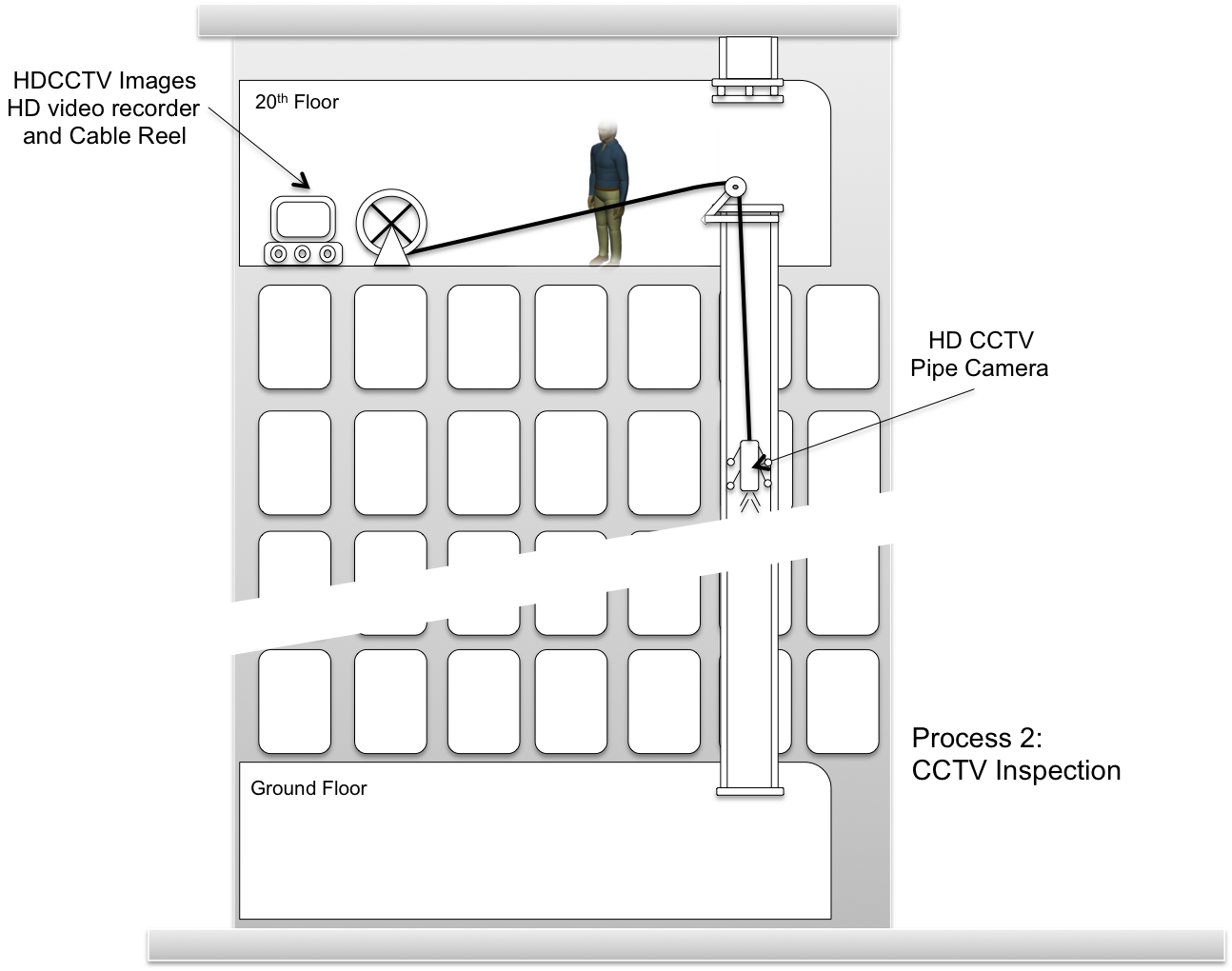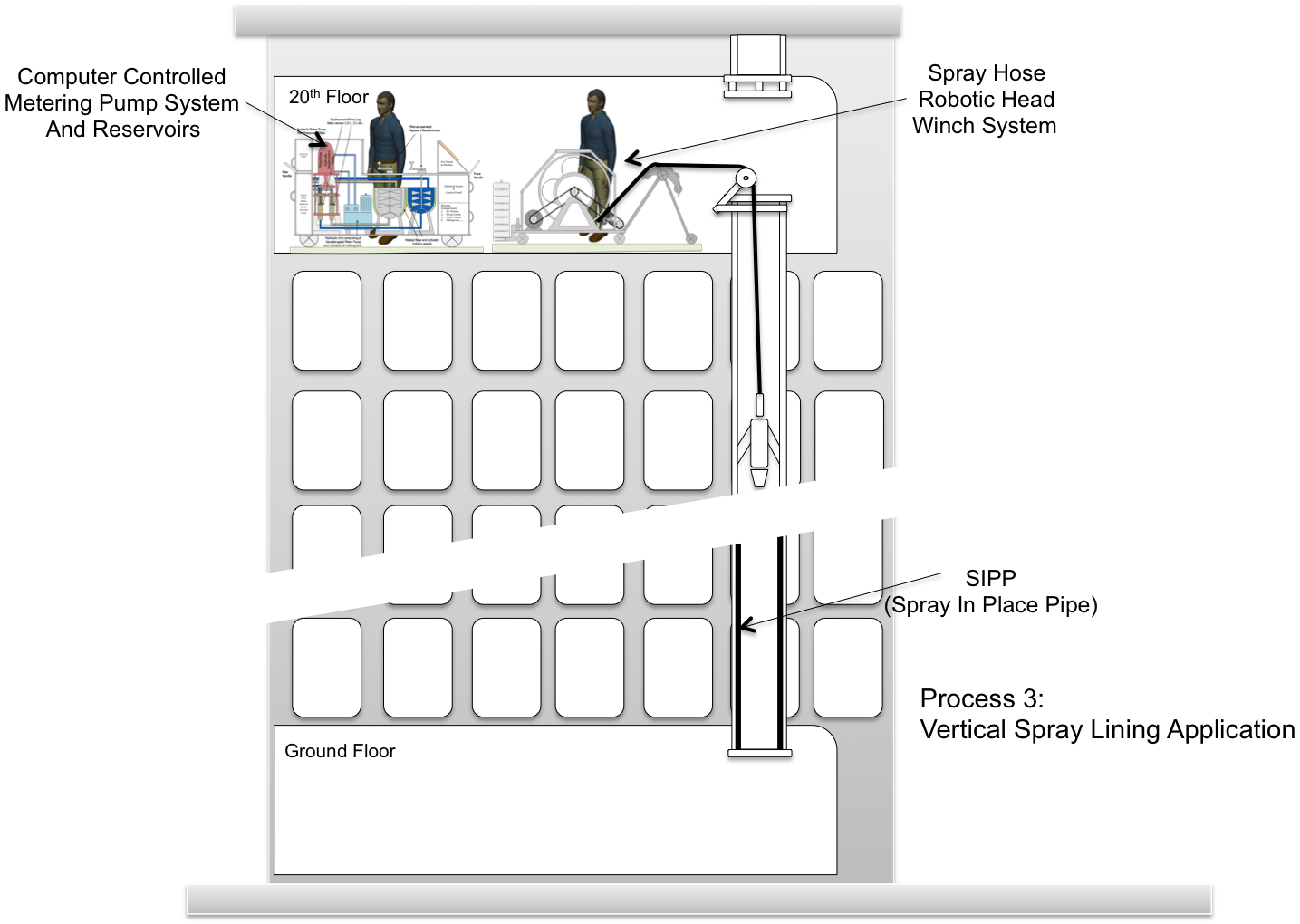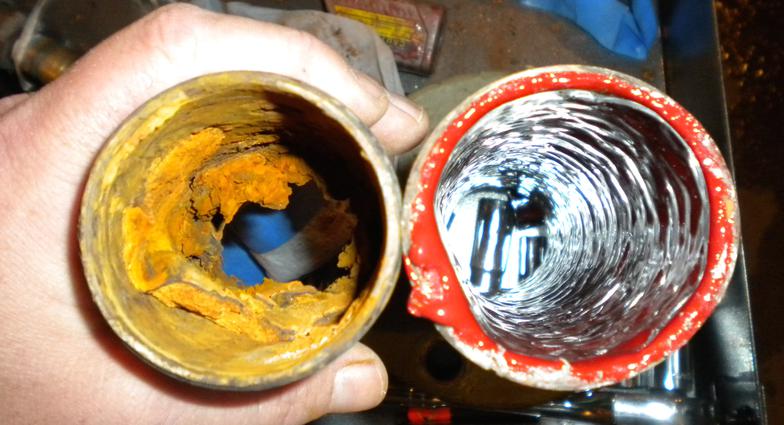617-986-4600
Process 1: Cleaning
A number of cleaning techniques are suitable for the removal of debris, encrustation and the effects of tuberculation so as to prepare the pipe for lining. The example above shows a rotary brush technique that is brush cleaned with different brush grades dependent on the condition of the pipe. The rotary brush is positioned in the pipe and fed under control to the end of the pipe to be lined. During the cleaning process a vacuum collects the debris at the bottom of the pipe.
The brush technique is ideal for pipes ranging from 1.25” to 6” diameter, another method for cleaning is via a shot blasting procedure, which also utilizes the vacuum for collection of debris, this process is typically utilized when the pipe has high grades of debris and encrustation.
Process 2: Pipe Inspection and Evaluation
Inspection of the pipes condition is evaluated using a CCTV pipe monitoring system and the inspection data is stored for client purposes.
Standard practice would be to evaluate before and after the cleaning process and if further cleaning is needed then it can be detected. We also inspect the pipe after lining for coating verification and post-lining CCTV video provided to client.
Process 3: Spray Lining Application
The Spray Lining process has two parts to its Lining Rig:
Pump System: This equipment holds the metering pump and the material resin storage vessels, also it has a highly accurate PLC controlled monitoring system that is capable of monitoring the mix ratio, flow rate, pressure and temperature of the material whilst circulating through the lining rig.
Winch System: This equipment holds the umbilical paint hose and the automated winch, which is used to supply material under monitored conditions of speed control and flow rate.
The Vertical lining process is started from the pipe entry point (ground floor) and is completed at the top of the pipe (top floor). Whilst the spin cast head is winched up the pipe it sprays a coating of mixed ratio resin to the internal walls of the pipe at a pre determined lining thickness which is programmed into the computer monitoring software prior to lining. The coating of the material will be 99.8% equal across the internal surfaces and the total length of the pipe that has been lined. This is due to the monitoring system software which is highly accurate in it’s calculations that monitor flow and speed factors.
Solutions
© 2024 SilverLining, All Rights Reserved.
Process of Operation for SIPP (Sprayed In Place Pipe)
Vertical Pipe Lining
Before After




